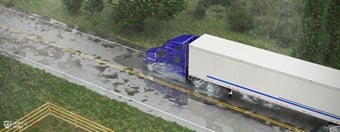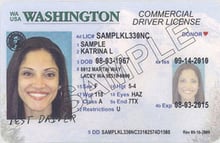From the wet, forested, and sometimes steep terrain of the Cascade Mountains in the west to the dryer, sunnier areas in the east, Washington offers incredible opportunities to drivers with the Double/Triple Trailers (T) endorsement. You’re here, so you must be considering adding this endorsement to your Washington Commercial Driver’s License (CDL). Boosting your qualifications and earning potential is a smart move, and the best part is, you’re nearly there already. After passing a 20-question multiple-choice knowledge test with a score of 80% (16 correct answers) you’ll receive the “T” endorsement on your CDL, granting you the ability to legally tow two or three trailers (where laws allow) (Washington CDL Handbook 2025).
Though this endorsement does qualify you for pulling doubles and triples, triples are not allowed in Washington due to the challenging mountain passes and urban traffic. In the Evergreen State, you can add the double/triple trailers endorsement to your CDL once you turn 18 years of age; however, if you’re planning on traveling across state lines, 21 years of age is the federal requirement. Something to also keep in mind is that doubles may not exceed a total combination length of 105 feet. But, make no mistake, in Washington, double trailers are often used for the transport of a wide variety of cargoes that include agricultural products (apples, cherries, potatoes, and wheat), timber and forestry products, seafood and processed food, industrial goods and machinery (including the aerospace industry), and consumer goods and electronics from hubs located in Seattle and Spokane. I can hear you now: “How do I get this done?”















